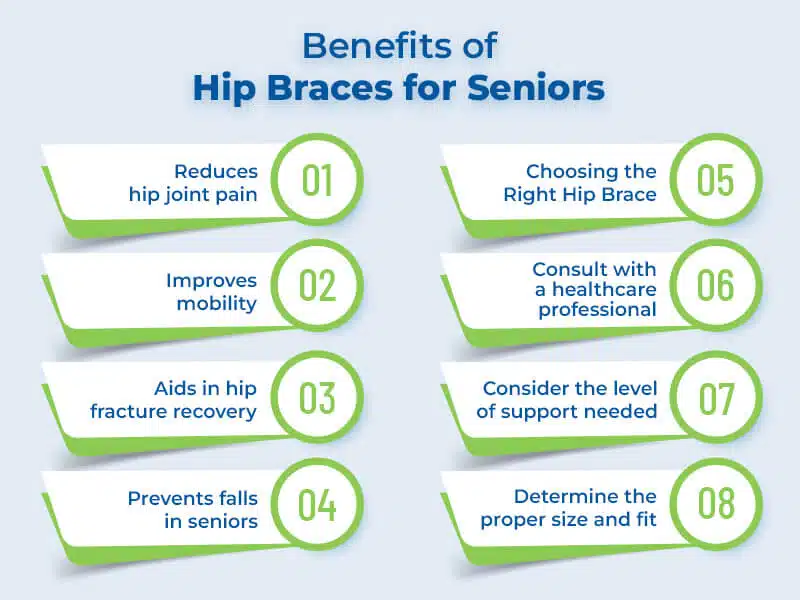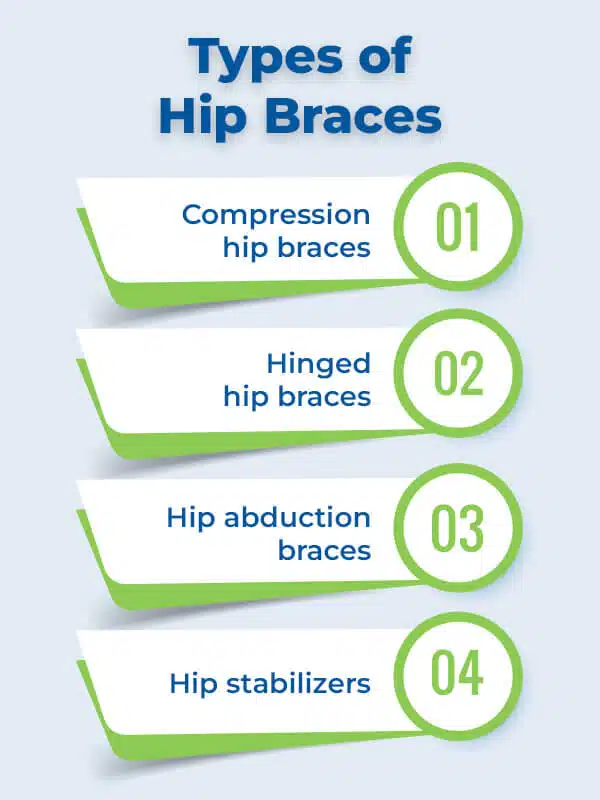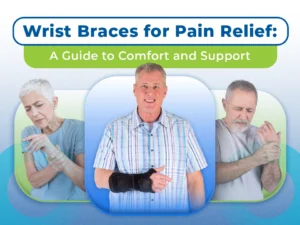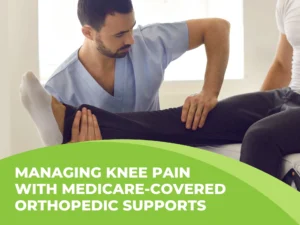As we age, our bones and joints become more susceptible to wear and tear, making us more prone to injuries and conditions such as osteoarthritis, hip fractures, bursitis, and tendinitis. These conditions can cause discomfort, pain, and reduced mobility, which can have a significant impact on our quality of life.
Hip braces for seniors are specifically designed to provide support and stability to the hip joint, alleviate pain, and improve mobility. They are an effective non-surgical treatment option for seniors with hip-related conditions. In this article, we will explore the importance of hip support braces for seniors and provide an overview of the benefits, types, and considerations for choosing the right hip brace.
Common Hip Conditions in Seniors
As we get older, our hips become increasingly susceptible to various conditions that can result in pain, discomfort, and decreased mobility. The following are some of the most common hip-related issues that seniors may experience:
Osteoarthritis
Osteoarthritis is a common condition that affects millions of people worldwide, particularly seniors. It occurs when the cartilage that cushions the hip joint wears away, leading to pain, stiffness, and a limited range of motion. Common symptoms of osteoarthritis in the hip include pain in the groin, thigh, and buttocks, as well as stiffness and difficulty moving the joint.
Hip Fractures
Hip fractures are serious injuries that can occur in seniors due to falls, particularly in those with weakened bones. A hip fracture can cause severe pain, swelling, and bruising in the hip area, as well as difficulty moving the leg. Treatment typically involves surgery and physical therapy to regain strength and mobility.
Bursitis
Bursitis is the inflammation of the bursae, small fluid-filled sacs that cushion the joints. In the hip joint, bursitis can cause pain and discomfort, particularly when walking or climbing stairs. Other symptoms may include swelling, redness, and warmth in the affected area.
Tendinitis
Tendinitis is the inflammation of the tendons that attach muscles to bones. In the hip joint, tendinitis can cause pain and stiffness in the hip and groin area, as well as difficulty moving the joint. It is often caused by overuse or repetitive motions.
For seniors with these common hip conditions, hip braces can help alleviate pain, provide support and stability to the joint, and aid in the recovery process. It is important to consult with a healthcare professional to determine the best course of treatment for each individual case.
Benefits of Hip Braces for Seniors
Hip braces can provide a range of benefits for seniors with hip-related conditions. Here are some of the key advantages:
Reduces hip joint pain
Hip braces can help reduce pain and discomfort in the hip joint by providing support and compression to the area. This can be particularly helpful for seniors with conditions such as osteoarthritis, bursitis, and tendinitis.
Improves mobility
Hip braces can improve mobility in seniors by providing stability to the hip joint, which can help them move around more easily and confidently. This can be especially beneficial for seniors who are recovering from a hip fracture or surgery.
Aids in hip fracture recovery
For seniors recovering from a hip fracture, a hip brace can be a valuable tool in the rehabilitation process. It can provide support to the affected area and help promote healing, as well as aid in regaining strength and mobility.
Prevents falls in seniors
Hip braces can also help prevent falls in seniors by providing stability and support to the hip joint, reducing the risk of sudden movements or balance issues that can lead to a fall.
In addition to these benefits, hip braces are often non-invasive and easy to use, making them an attractive option for seniors looking for a non-surgical treatment option for hip-related conditions.
Choosing the Right Hip Brace
Choosing the right hip brace is crucial to ensuring its effectiveness and providing optimal support for seniors with hip-related conditions. Here are some key factors to consider when selecting a hip brace:
Consult with a healthcare professional
Before making a decision on a hip brace, it is important to consult with a healthcare professional, such as a doctor, physical therapist, or orthotist. They can help determine the type of brace that will best meet an individual’s needs and provide guidance on proper use and fit.
Consider the level of support needed
Different hip braces offer varying levels of support, depending on an individual’s condition and activity level. Seniors should consider the level of support they need, such as mild, moderate, or maximum when selecting a brace.
Determine the proper size and fit
To ensure maximum effectiveness, hip braces must fit properly. Seniors should measure themselves carefully and select a brace that fits snugly but is not too tight. It is important to follow the manufacturer’s sizing guidelines and make adjustments as needed.
By taking these factors into consideration, seniors can select a hip brace that will provide optimal support and help them manage hip-related conditions effectively.
Types of Hip Braces
There are several types of hip braces available for seniors with hip-related conditions. Here are some of the most common types:
Compression hip braces
Compression hip braces are designed to provide compression and support to the hip joint, which can help reduce pain and improve mobility. These braces are typically made from breathable, lightweight materials and can be worn discreetly under clothing.
Hinged hip braces
Hinged hip braces are similar to compression braces but include hinges that allow for a greater range of motion in the hip joint. These braces can be particularly beneficial for seniors who are recovering from a hip fracture or surgery.
Hip abduction braces
Hip abduction braces are designed to keep the legs apart and prevent the hip joint from rotating inward. These braces are often used to aid in the recovery of hip surgery and can help prevent dislocation of the hip joint.
Hip stabilizers
Hip stabilizers are designed to provide support and stability to the hip joint, particularly during physical activity. These braces can be beneficial for seniors who want to remain active but experience pain or discomfort in the hip joint.
When selecting a hip brace, it is important to consult with a healthcare professional to determine which type is best suited to an individual’s specific needs and condition. Our medical hip brace product is lightweight, breathable, and supportive. It’s easy to adjust for abduction and offers a customizable fit. If you’ve been dealing with hip pain or are recovering from injury or surgery, be sure to get the hip support your need. Artik Medical Supply is here for you. Contact us today for a free insurance eligibility check.
Read More: Does Medicare Cover A Hip Brace?
How to Use a Hip Brace
Proper use of a hip brace is essential to ensure its effectiveness and provide optimal support for seniors with hip-related conditions. Here are some key considerations for using a hip brace:
Proper application and removal
Seniors should carefully follow the manufacturer’s instructions when applying and removing the hip brace. This may involve adjusting straps or closures to achieve a secure and comfortable fit. It is important to take care when putting on or removing the brace to avoid exacerbating any existing hip pain or discomfort.
Duration of use
The duration for which a hip brace should be worn will depend on an individual’s condition and the type of brace used. Seniors should consult with a healthcare professional to determine the appropriate duration of use for their specific situation. Some braces may be worn for short periods during specific activities, while others may be worn for longer periods throughout the day.
Maintenance and care
To ensure the longevity and effectiveness of the hip brace, seniors should take care of, maintain and clean it properly. This may involve wiping down the brace with a damp cloth, allowing it to air dry, and storing it in a cool, dry place. Depending on the materials used in the brace, it may also require periodic washing or spot cleaning.
By following these guidelines, seniors can use a hip brace effectively and safely to manage hip-related conditions and maintain mobility and quality of life.
In Conclusion
Hip braces can provide significant benefits for seniors with hip-related conditions, including reducing pain, improving mobility, aiding in recovery from hip fractures, and preventing falls. When choosing a hip brace, seniors should consult with a healthcare professional to ensure proper fit and level of support.
At Artik Medical Supply, we offer specialized hip braces designed specifically for seniors, including compression braces, hinged braces, abduction braces, and stabilizers. Our team of experts can help seniors choose the right brace for their needs and provide guidance on proper use and maintenance.
By investing in a high-quality hip brace and following proper guidelines for use, seniors can manage hip-related conditions effectively and maintain their independence and quality of life. Visit our website today to browse our selection of hip braces and start experiencing the benefits for yourself.









